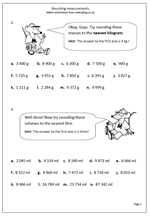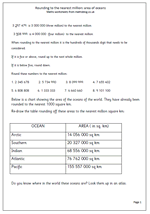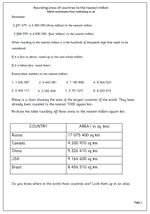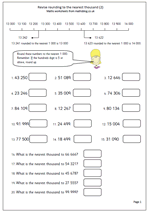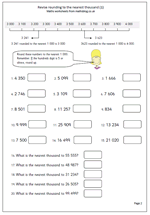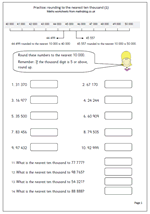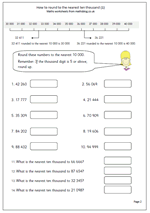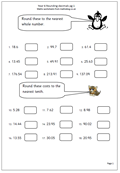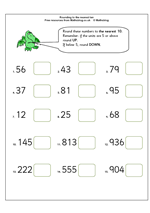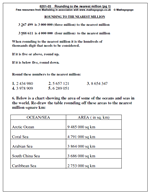 One of the earliest posts that I made, back in 2007 was about rounding large numbers, up to millions. Many children are fascinated by large numbers and these two pages can help them both with reading and writing large numbers and rounding.
One of the earliest posts that I made, back in 2007 was about rounding large numbers, up to millions. Many children are fascinated by large numbers and these two pages can help them both with reading and writing large numbers and rounding.
Thanks to mathsphere.co.uk for letting me use these resources, as they are taken from the ‘it’s All Figured Out’ CD.
Larger numbers can be rounded in just the same way as rounding hundreds or thousands; the key is to refer to the digit below the one you want to round.
Eg rounding to a million, look at the hundred thousand digit:
2 345 456 is rounded down to 2 000 000 (two million) to the nearest million because the hundred thousand digit is only 3.
2 987 654 is rounded up to 3 000 000 (three million) to the nearest million because the hundred thousand digit is 9.
There are plenty of good sources in geography, such as population figures, areas of countries etc
Rounding to the nearest million (pg 1)
Rounding to the nearest million (pg 2)
